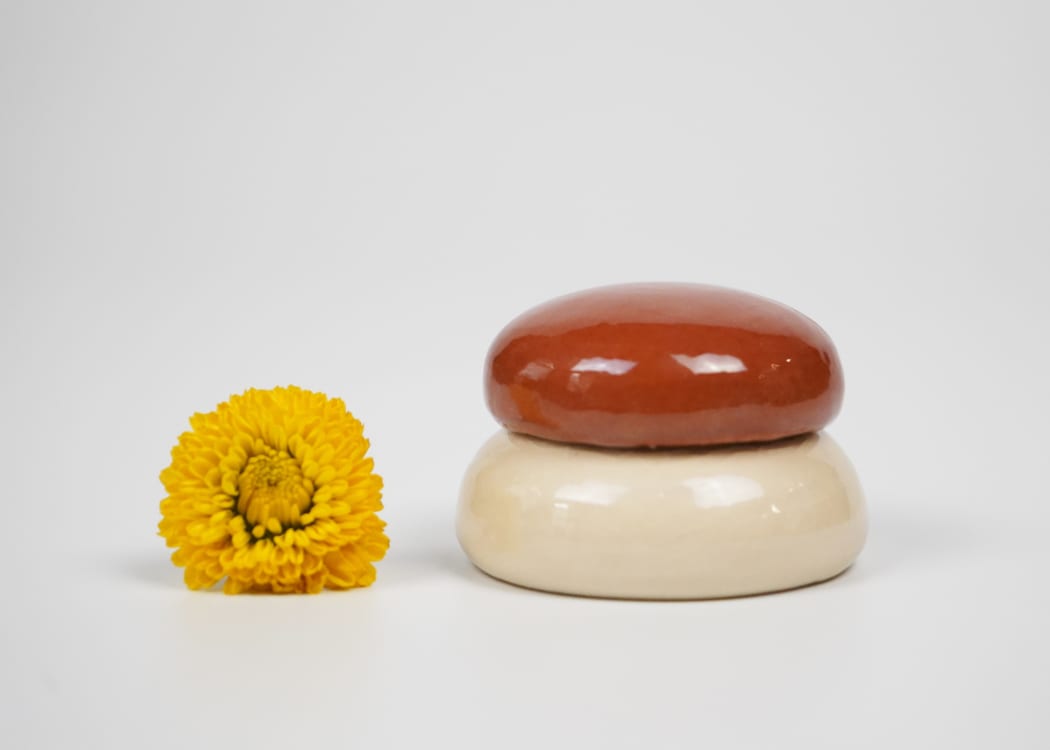
“Kagami Mochi” is a traditional Japanese New Years decoration. It translates to "mirror mochi" or "mirror rice cake". Where does it come from? What does it mean? Let us explore its symbolism.
From the name to the form, kagamimochi shows the spiritual motifs that pervade Japanese aesthetics. Kawasaki Waraku replicates the celebratory kagamimochi in this delightful incense container. It's rounded surface mimics the soft appeal of a mochi surface.
Not only does the shiny surface of this ceramic work by Kawasaki reflect as a mirror would, but the mirror itself is a symbolic motif that evokes the religious use of bronze mirrors in Japanese art history.
Both bronze mirrors and their religious uses were first imported from China to Japan during the Tang dynasty. Used in funerary and ritual contexts, the Bronze mirror was believed to be a portal to the spiritual realm, where Kami (deities/gods) reside. To gaze into a mirror was to gaze upon yourself, the subject, but also to gaze into a mirrored reality. To emphasize the celebratory, ritual, and spiritual context, Kawasaki created the core: Mochi. Mochi (もち、 餅), is a Japanese rice cake. Rice, as the essence of Japanese cuisine, is also quintessential to ritual and religious practice in Buddhism. Mochi is often placed on altars as offerings to deities and gods. It is aptly, the main motif in this ceramic incense container.
Overall, this piece is riddled with ritual contexts. Kawasaki titled this small piece “mirror mochi” firstly to emphasize the wet, reflective and appealing surface of mochi, but also to highlight the spiritual context of incense and its usage. Finally, the bisection of this ceramic piece in two colors ties the incense box together with a celebratory red, accompanied by a light, eggshell beige. The two colored pieces recall the traditional Chinese concept of Yin and Yang energy, a concept which was imported to Japan during the Tang dynasty. Traditionally, Yin is associated with the moon, represented by a darker color. Yang, on the other hand, is associated with the sun. In the Kagami Mochi Kogo, Kawasaki intentionally reflects these associations with colorful style. The red reflects the moon, while the pale white-beige represents the sun. This piece balances ritual and religious affinities, telling the story of Japanese liturgy.